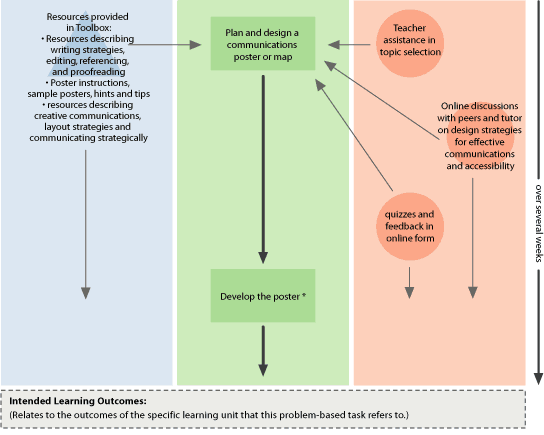|
WHAT THE STUDENTS DO
Each learning unit involves the completion of an overriding
learning activity, designed to provide the learner with practical
experience in relevant areas of youth work.
Trainers may choose to employ this activity as a summative
assessment task for the particular learning unit, or combine
the activities from several units to assess a competency standard.
Subsequently, each learning activity has been designed to
produce some form of 'evidence' that can be submitted to the
trainer if required.
In line with the constructivist design of the product, learners
are not confined to any specific sequence. Each learner completes
activities and accesses resources as personally required.
However, in the case of various activities being used for
assessment purposes, a trainer may wish to stipulate the completion
of particular activities in a set order.
SIGNIFICANCE OF ORDER
The lack of an order or sequence is seen to be a significant
feature of this product, as it increases flexibility for learners
and therefore expands the potential target audience.
CRITICAL ACTIVITIES
The constructivist design allows learners to access resources
as required in order to complete each learning activity. These
resources generally involve smaller tasks (workshops, quizzes,
etc.), which allow learners to develop skills and knowledge
in each topic.
Subsequently, learners will only complete the smaller tasks
within the resources that are deemed personally necessary
for completion of the learning activity.
|
